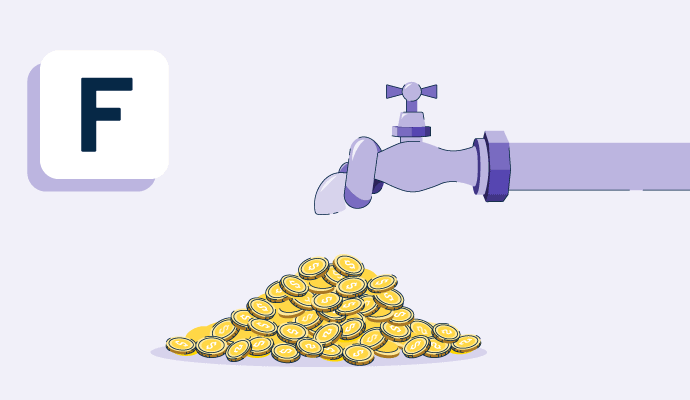
A financial shortfall refers to a company’s unpaid liabilities and financial obligations with vendors and investors that result in a temporary clampdown of business services. It is a loss amount by which current liabilities exceed the total operating cash of a company, offset through banks or private loans.
Companies experience financial shortfalls due to several reasons, like a delay in vendor or customer payments or an economic downturn.
For individuals, a shortfall occurs when monthly expenditure outgrows income. This phenomenon can make someone cut down on the majority of their monthly expenses like food, shopping, and transportation to level their pockets.
Shortfalls are also caused due to unpredictable circumstances or natural calamities which destroy a company’s logistics or supply chain operations, resulting in a loss of revenue. Having a clear analysis of financial transactions with accounting software can stabilize cash flow, bookkeep payments, and reduce shortfall risks.
Consider a furniture company that has the resources to build a thousand tables in its production outlet, as per the market demand. If a sudden drop in the demand for tables occurs, all of the raw materials go to waste and the company faces a huge revenue shortfall. Furthermore, if the demand drops after the tables reach the retail outlet of the company, the transportation and production costs get added to the set of liabilities.
If a company continues producing goods in bulk in the hope to sell at least some of them, the liabilities rise in number, resulting in a long-term shortfall. Persistent occurrence of shortfalls can push a company into grave bankruptcy as it will never have enough capital to rise up from the damage.
For salaried professionals, shortfall arises due to sudden inflation of the price of consumables or heavy family expenditures in a month like a wedding or a house renovation.
Interestingly, if a company undergoes financial shortfall, their employees also experience some form of it in their personal lives due to delays in payroll processing.
The four major types of financial shortfalls are short-term and long-term, appraisal, and budget. While the long–term and short-term shortfalls are interconnected, appraisal and budget shortfalls mainly deal with escrow payment formalities.
Short-term shortfalls happen due to an unpredictable market condition, accident, or act of nature, while long-term shortfalls may be related to poor overall cash management or financial planning.
Not every business challenge can be counted as a shortfall. Many times, businesses fail to keep up with cash flow and struggle to accumulate liquid assets for their standard business operations.
Major incidents like large supply shortages, stock market crashes or natural calamities can cause financial shortfalls. Some other causes include :
Leaving a shortfall situation unattended can result in dangerous outcomes as the company might run out of funds for basic expenses like the office lease or employee wages. It might leave a company with no other option than liquidating “in-service” fixed assets to pay off everything, which results in a total shutdown of the business.
However, a projected shortfall can help forecast important metrics like production costs, supply costs, warehousing, and transportation charges beforehand. Forecasting in advance can normalize the situation much faster. Some best methodologies listed below can help nix financial shortfall risks.
Shreya Mattoo is a former Content Marketing Specialist at G2. She completed her Bachelor's in Computer Applications and is now pursuing Master's in Strategy and Leadership from Deakin University. She also holds an Advance Diploma in Business Analytics from NSDC. Her expertise lies in developing content around Augmented Reality, Virtual Reality, Artificial intelligence, Machine Learning, Peer Review Code, and Development Software. She wants to spread awareness for self-assist technologies in the tech community. When not working, she is either jamming out to rock music, reading crime fiction, or channeling her inner chef in the kitchen.
What is virtual reality? Virtual reality (VR) is a computer-generated simulation of a...
 by Alyssa Towns
by Alyssa Towns
What is user-generated content? User-generated content (UGC) is content that unpaid consumers...
 by Alyssa Towns
by Alyssa Towns
Let’s be honest: consumers don’t trust marketers.
 by Bridget Poetker
by Bridget Poetker
What is virtual reality? Virtual reality (VR) is a computer-generated simulation of a...
 by Alyssa Towns
by Alyssa Towns
What is user-generated content? User-generated content (UGC) is content that unpaid consumers...
 by Alyssa Towns
by Alyssa Towns


